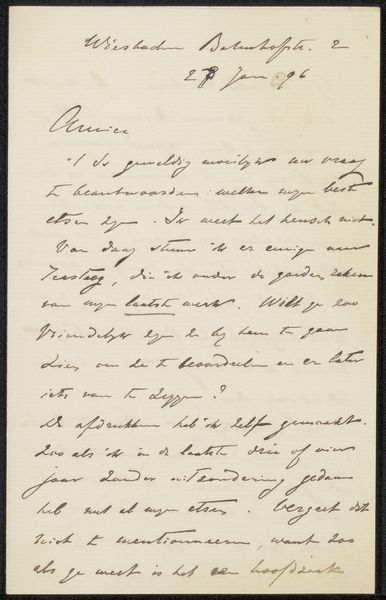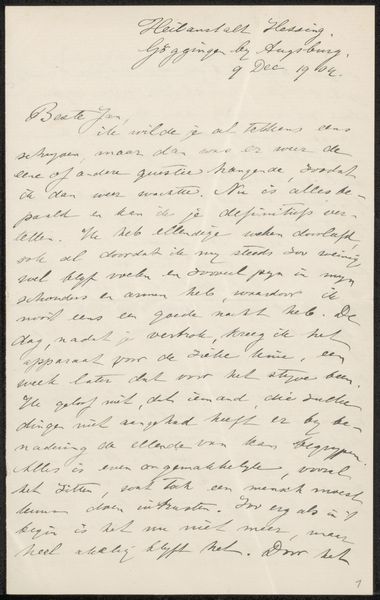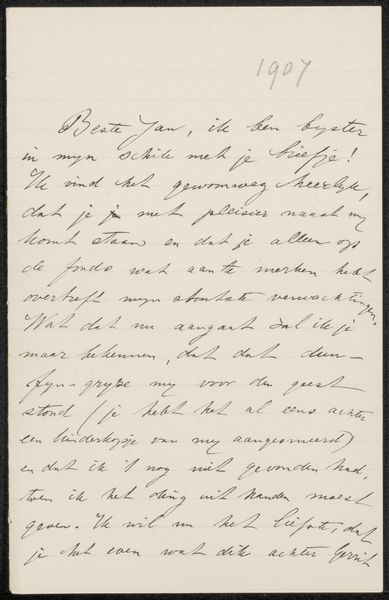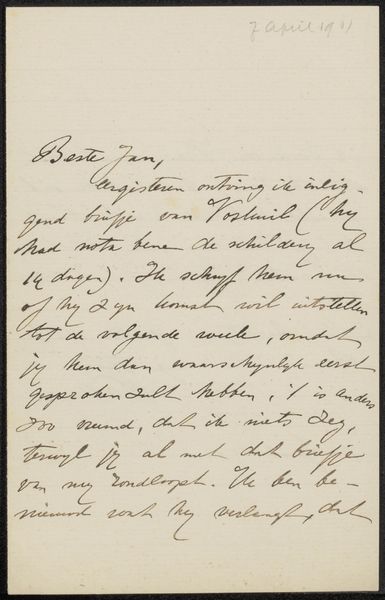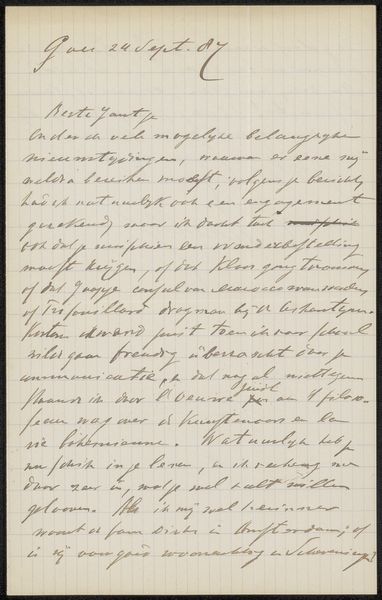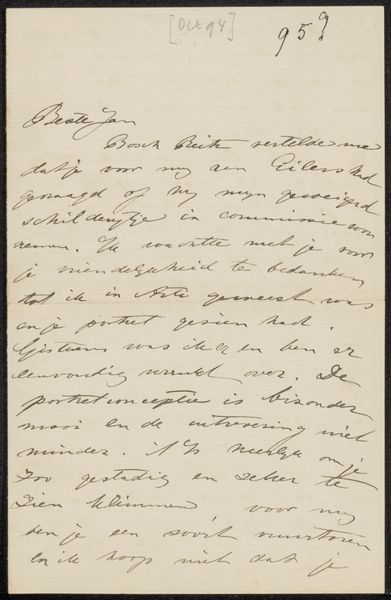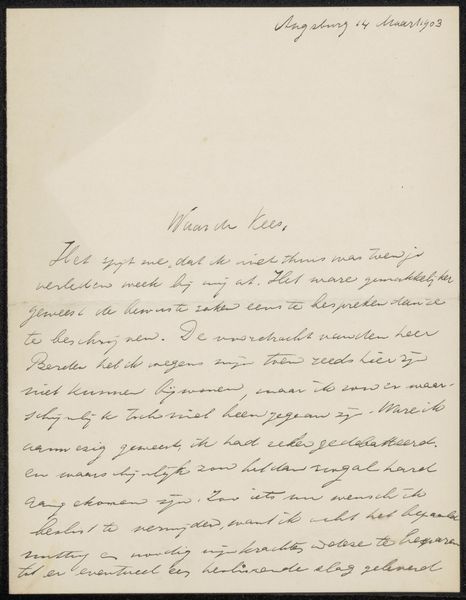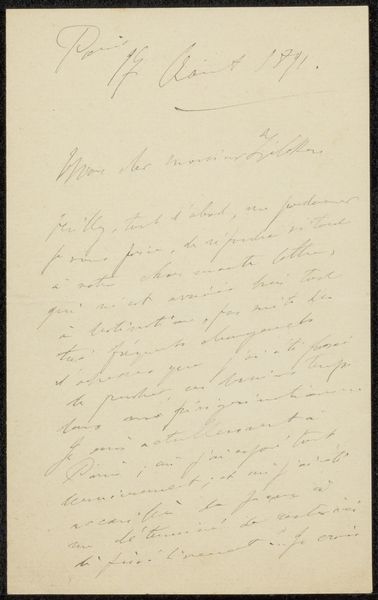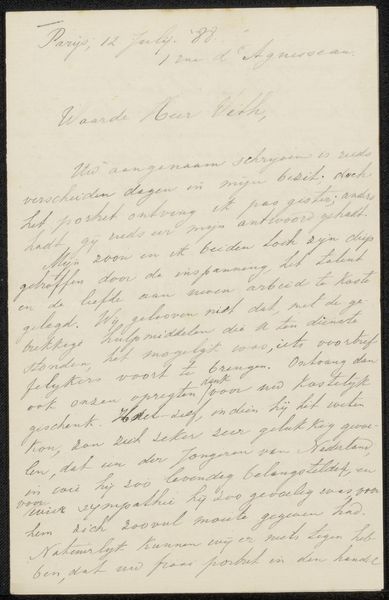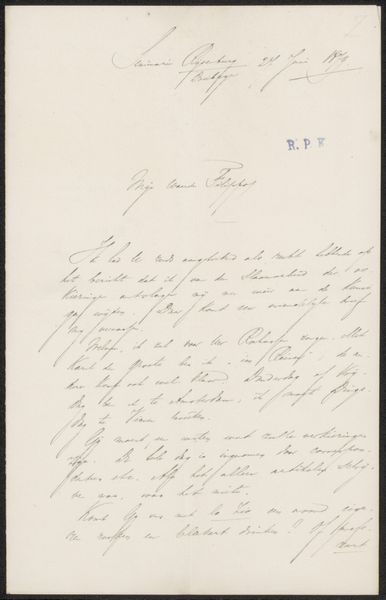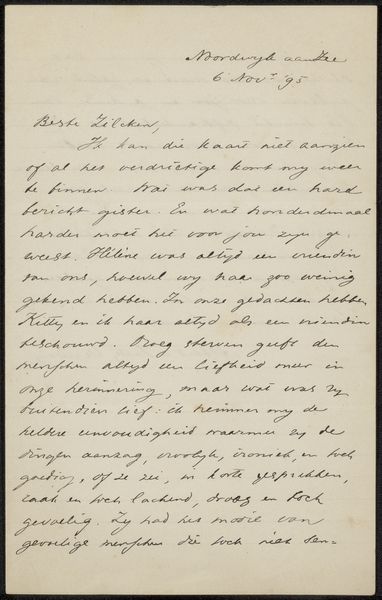
drawing, paper, ink, pen
#
drawing
#
pen drawing
#
dutch-golden-age
#
paper
#
ink
#
pen work
#
pen
#
calligraphy
Copyright: Rijks Museum: Open Domain
Editor: We're looking at "Brief aan Jan Veth" by Wally Moes, likely after 1891. It's ink on paper, a simple pen drawing. There's something very intimate about it, like glimpsing a private thought. What stands out to you about this piece? Curator: The act of writing itself becomes paramount. Look at the labor involved, the careful application of ink. Each stroke represents time and effort, a conscious decision in the means of production. It shifts the focus from pure aesthetic appreciation to the material and the work behind the artifact. Editor: So you see the value in the labor and production here, not necessarily in the content? Curator: Not exclusively, but considering the social context is vital. Who was Wally Moes writing to? What tools were readily available? The creation of a simple letter wasn’t always so simple; it’s crucial to understand the process of creating written communication during that time, from sourcing materials to the physical act of writing. Is that paper handmade, perhaps? How did the availability and cost of ink shape letter writing, both for everyday citizens and for artists? Editor: That gives the image a new perspective. Instead of simply seeing the writing, you're thinking about the materiality of making. Curator: Precisely! And how that informs the exchange between people, not just the aesthetic beauty. It prompts us to think beyond "high art" and acknowledge the value and skill in everyday actions and craftsmanship. Editor: I hadn’t considered the economic aspects before. Curator: Exactly! Approaching the study from a material perspective unearths the production’s conditions and contextual information.
Comments
No comments
Be the first to comment and join the conversation on the ultimate creative platform.
